How to Use THCa Kief: 7 Popular Methods Explained
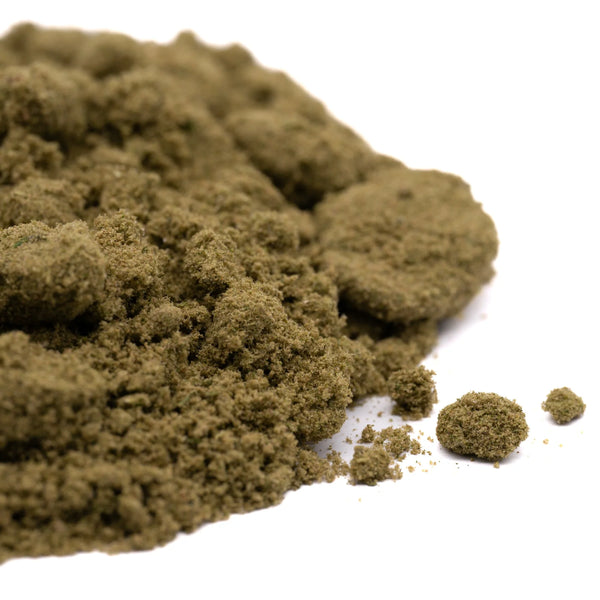
THCa kief represents one of the most potent and versatile cannabis concentrates available to enthusiasts and medical users alike. This crystalline powder, collected from the trichomes of cannabis flowers, offers an impressive array of consumption possibilities that can be tailored to individual preferences, tolerance levels, and desired effects. Understanding how to use THCa kief effectively opens up a world of possibilities for both recreational and therapeutic applications.
The versatility of kief consumption stems from its concentrated nature and the various ways it can be processed and consumed. Unlike other cannabis products that might be limited to specific consumption methods, THCa kief adapts beautifully to multiple approaches, from raw consumption that preserves the acidic cannabinoid profile to heat-activated methods that convert THCa into psychoactive THC. This flexibility makes it an excellent choice for users seeking to explore different ways to consume THCa kief based on their specific needs and circumstances.
Several factors influence the choice of consumption method when working with THCa kief. Personal tolerance levels play a crucial role, as different methods deliver varying intensities and durations of effects. The desired onset time is another significant consideration – some methods provide nearly instantaneous results, while others may take hours to reach peak effectiveness. Additionally, the intended purpose (recreational, therapeutic, or wellness-focused) will guide the selection of the most appropriate consumption technique.
The onset and duration of effects vary dramatically depending on the chosen method. Sublingual administration and vaporization typically provide rapid onset within minutes, making them ideal for users seeking immediate relief or effects. Conversely, edible preparations and topical applications may take 30 minutes to 2 hours to manifest their full effects but often provide longer-lasting benefits. Understanding these timing differences is essential for developing an effective and safe consumption routine with THCa kief consumption methods.
When exploring the best ways to consume THCa kief, it's important to recognize that quality matters significantly. Premium kief from reputable sources like Oregon Hemp Flower ensures consistent potency and purity, which directly impacts the effectiveness of any chosen consumption method. High-quality kief typically exhibits a light, sandy color and a strong aromatic profile, indicating proper collection and storage practices.
Method 1: Raw Consumption
Raw consumption represents one of the most straightforward approaches to using THCa kief effectively. This method preserves the acidic form of THCa, which offers unique therapeutic benefits without the psychoactive effects associated with decarboxylated THC. Raw consumption is particularly appealing to users seeking the anti-inflammatory, neuroprotective, and antiemetic properties of THCa without intoxication.
Sublingual Method
The sublingual method involves placing a measured amount of THCa kief directly under the tongue, where it can be absorbed through the mucous membranes. This technique provides relatively quick onset, typically within 15-30 minutes, as the cannabinoids bypass the digestive system and enter the bloodstream directly. To optimize sublingual absorption, users should hold the kief under their tongue for at least 60-90 seconds before swallowing any residue.
The sublingual approach works exceptionally well with finely ground kief, as smaller particles increase surface area contact with the mucous membranes. Users often report a mild, earthy taste that dissipates quickly. This method allows for precise dosing and easy adjustment of intake based on individual response and tolerance levels.
Mixing with Food
Incorporating raw THCa kief into food represents another popular consumption method that masks the natural flavor while providing therapeutic benefits. The kief can be sprinkled directly onto salads, yogurt, oatmeal, or other foods without requiring any cooking or heating process. This approach is particularly suitable for users who prefer to integrate their cannabis consumption into their regular dietary routine.
When mixing kief with food, it's important to consider the timing of consumption relative to meals. Taking THCa kief with fatty foods can enhance absorption, though the effects may take longer to manifest compared to sublingual administration. Cold foods and beverages work particularly well, as heat might begin the decarboxylation process and convert some THCa to THC.
Smoothies and Drinks
Adding THCa kief to smoothies, juices, or other cold beverages creates an easy and palatable consumption method. The natural flavors of fruits and vegetables can effectively mask any earthy taste from the kief while providing a convenient delivery system. Smoothies containing healthy fats from sources like avocado, coconut oil, or nut butters may enhance cannabinoid absorption.
When preparing kief-infused beverages, thorough mixing is essential to ensure even distribution and consistent dosing. Some users prefer to pre-mix the kief with a small amount of fat or oil before adding it to their drink to improve solubility and distribution throughout the liquid.
Dosage Considerations
Raw consumption dosing requires careful attention, as individual tolerance and sensitivity can vary significantly. Beginning with small amounts, typically 25-50 milligrams of kief, allows users to assess their response before increasing the dose. The effects of raw THCa consumption are generally milder than activated THC, but finding the optimal dose is still crucial for achieving desired therapeutic benefits.
Users should maintain a consumption log to track dosages, timing, and effects, helping to establish an effective personal dosing protocol. It's also important to source high-quality kief from trusted suppliers like Oregon Hemp Flower to ensure consistent potency and accurate dosing calculations.
Method 2: Vaporization
Vaporization stands out as one of the most efficient and health-conscious methods for consuming THCa kief. This technique heats the kief to temperatures that activate the THCa without combustion, preserving more of the beneficial compounds while reducing harmful byproducts associated with smoking. The precise temperature control available with quality vaporizers makes this an excellent choice for users seeking consistent, potent effects with minimal waste.
Temperature Settings (315-440°F)
The temperature range for vaporizing THCa kief typically falls between 315°F and 440°F (157°C to 227°C), with different temperatures producing varying effects and flavor profiles. Lower temperatures around 315-350°F preserve more terpenes and provide a more flavorful experience with milder psychoactive effects, making this range ideal for daytime use or users with lower tolerance levels.
Mid-range temperatures between 350-390°F offer a balance between flavor preservation and cannabinoid activation, producing moderate effects suitable for most users. Higher temperatures approaching 440°F maximize THC conversion and produce stronger psychoactive effects, though some terpenes may be lost at these elevated temperatures. Experimenting within this range allows users to find their optimal temperature for desired effects and flavor preferences.
Temperature stepping, or gradually increasing the temperature during a session, can extend the vaporization experience and extract different compounds at various stages. This technique allows users to experience the full spectrum of effects available from their kief while maximizing efficiency and minimizing waste.
Device Recommendations
Desktop vaporizers generally provide the most precise temperature control and efficient extraction for kief consumption. Units with adjustable temperature settings and good airflow control work particularly well with the fine texture of kief. Portable vaporizers can also work effectively, though users should choose models with adjustable temperature settings and chambers suitable for concentrates.
When using vaporizers with kief, employing screens or concentrate pads can prevent the fine particles from being drawn into the device's internals. Some users prefer to sandwich kief between layers of flower or use specialized concentrate chambers designed specifically for powdery materials like kief.
The choice between conduction and convection heating can impact the vaporization experience. Convection vaporizers, which heat air that passes through the material, often provide more even heating and better flavor preservation, while conduction units heat the material directly and may produce faster, more intense effects.
Technique Tips
Proper loading technique is crucial for optimal vaporization results with kief. Loading chambers loosely prevents restriction of airflow while ensuring even heating throughout the material. Overpacking can lead to uneven vaporization and reduced efficiency. Using a small amount initially and adding more as needed often produces better results than loading a large quantity at once.
Grinding or breaking up any clumped kief before loading helps ensure even heating and extraction. Some users prefer to mix their kief with a small amount of ground flower to improve airflow and provide structure within the chamber. This technique can also help stretch the kief and provide a more gradual onset of effects.
Taking slow, steady draws allows for optimal vapor production and temperature maintenance within the device. Rapid, aggressive inhalation can cool the heating element and reduce vapor quality. Patience during the heat-up process and between draws helps maintain consistent temperatures and maximize extraction efficiency.
Efficiency Benefits
Vaporization offers superior efficiency compared to combustion methods, extracting more active compounds from the same amount of kief. The controlled heating environment allows for complete decarboxylation of THCa while preserving heat-sensitive terpenes that contribute to the entourage effect. This efficiency translates to better value and more consistent effects from each gram of kief consumed.
The ability to save and reuse already-vaped kief (AVK) provides additional value, as the material retains some active compounds that can be used in edibles or other preparations. This secondary use effectively extends the value of the initial kief purchase while providing a different consumption experience.
Vapor production typically continues until the kief changes color from its original hue to a darker brown, indicating complete extraction. This visual cue helps users maximize their material usage while avoiding the harsh, burnt flavors associated with overheating.
Method 3: Smoking Enhancement
Using THCa kief as a smoking enhancement transforms ordinary cannabis consumption into a significantly more potent experience. This traditional method has remained popular due to its simplicity, immediate effects, and the ability to easily control dosing by adjusting the amount of kief added to smoking materials. While combustion does destroy some beneficial compounds, the rapid onset and intense effects make this approach appealing for users seeking immediate relief or recreational enjoyment.
Bowl Topping Method
The bowl topping method involves sprinkling kief over packed flower in a pipe or bong bowl, creating layers of varying potency that provide an extended, intensifying experience. This technique allows users to start with milder effects from the underlying flower and progress to more intense effects as the kief is reached and consumed. The layering approach provides excellent control over the intensity and duration of the session.
When applying kief as a bowl topper, users should sprinkle it evenly across the surface to ensure consistent burning and avoid hot spots that might waste material. A light, even layer typically works better than concentrated piles, which can burn too quickly or create uneven heating. Some experienced users create multiple thin layers throughout the bowl, alternating between flower and kief for an extended, graduated experience.
The bowl topping method works particularly well with pipes and bongs that provide good airflow control. Glass pieces with larger bowls accommodate kief layers more effectively, while smaller bowls require more careful application to avoid overcrowding. Using a screen can help prevent kief from being drawn through the bowl piece, though this isn't always necessary with properly packed bowls.
Joint and Blunt Addition
Adding kief to joints and blunts significantly increases potency while maintaining the social and ritualistic aspects of these consumption methods. The kief can be sprinkled directly onto the flower before rolling, mixed throughout the material, or applied to the outside of the rolled product using a binding agent like oil or saliva. Each approach produces different burning characteristics and effect profiles.
Internal kief application, where the powder is mixed with or layered among the flower before rolling, typically provides the most even burning and consistent effects. This method requires slightly looser packing to accommodate the added material while maintaining proper airflow. External application creates a more dramatic visual presentation and can intensify effects, but may cause uneven burning if not applied carefully.
Rolling papers and wraps designed for concentrates can better accommodate kief-enhanced products, as they often burn more slowly and evenly with high-potency materials. Some users prefer hemp-based papers that complement the natural flavors of quality kief from sources like Oregon Hemp Flower.
Pipe Screens and Considerations
Using screens in pipes becomes particularly important when smoking kief, as the fine particles can easily be drawn through standard bowl holes. Fine mesh screens prevent waste while ensuring clean airflow and preventing kief particles from reaching the user's mouth. Stainless steel and brass screens work well, though some users prefer glass screens for flavor preservation.
Screen maintenance becomes more critical when regularly smoking kief, as the fine particles can clog screens more quickly than flower alone. Regular cleaning with isopropyl alcohol helps maintain airflow and prevents buildup that can affect taste and efficiency. Having multiple screens available allows for rotation and ensures clean smoking experiences.
Some pipe designs incorporate built-in screens or smaller holes that work well with kief without requiring additional screens. These designs can simplify the smoking process while providing the benefits of waste prevention and improved airflow control.
Combustion Considerations
While smoking kief provides immediate effects and easy dosing, combustion temperatures destroy many beneficial terpenes and create potentially harmful byproducts. Users should be aware that combustion temperatures typically exceed 800°F, well above the optimal range for preserving the full spectrum of cannabis compounds. Despite these drawbacks, the immediate onset and intense effects make smoking a popular choice for many users.
Controlling combustion temperature through techniques like cornering bowls (lighting only small sections at a time) can help preserve more compounds while extending the smoking session. Using hemp wick instead of butane lighters can provide lower, more consistent temperatures while avoiding chemical flavors that might mask the kief's natural taste profile.
The enhanced potency of kief-supplemented smoking materials requires adjusted consumption patterns, as users may achieve desired effects with significantly less material. Starting with small amounts and waiting for effects to manifest helps prevent overconsumption and ensures a more controlled, enjoyable experience. This approach represents one of the traditional THCa kief consumption methods that remains popular due to its immediate effects and social aspects.
Method 4: Edible Preparation
Converting THCa kief into edible preparations offers one of the most versatile and long-lasting consumption methods available. This approach allows for precise dosing, extended duration of effects, and integration into countless recipes and food preparations. The process requires decarboxylation to activate the THCa into psychoactive THC, followed by infusion into fat-based carriers that facilitate absorption and distribution throughout food preparations.
Decarboxylation Process
Decarboxylation represents the critical first step in preparing kief for edible consumption. This process applies controlled heat to convert inactive THCa into psychoactive THC through the removal of carboxyl groups. The optimal decarboxylation temperature for kief ranges from 220°F to 240°F (104°C to 116°C) for 25-45 minutes, depending on the specific characteristics of the material and desired potency levels.
To properly decarboxylate kief, spread it evenly on a parchment-lined baking sheet, creating a thin layer that allows for uniform heating. Covering the kief with aluminum foil helps prevent terpene loss while ensuring even heat distribution. An oven thermometer helps verify accurate temperatures, as oven settings can vary significantly from actual internal temperatures.
The decarboxylation process is complete when the kief changes color from its original hue to a slightly darker, more golden tone, and when the material stops bubbling or releasing visible vapor. Over-decarboxylation can degrade THC into CBN, producing more sedative effects, while under-decarboxylation results in reduced potency and effectiveness in edible preparations.
Alternative decarboxylation methods include using specialized devices like the Ardent Nova or similar units designed specifically for cannabis decarboxylation. These devices provide precise temperature control and eliminate guesswork while ensuring consistent results across different batches of kief.
Oil Infusion Methods
After decarboxylation, the activated kief must be infused into a fat-based carrier to create the foundation for edible preparations. Common carrier oils include coconut oil, olive oil, butter, and MCT oil, each offering different flavor profiles and cooking applications. The choice of carrier depends on the intended final product and personal preference for taste and texture.
The infusion process typically involves combining the decarboxylated kief with the chosen carrier oil and applying gentle heat for 1-3 hours. A double boiler setup or slow cooker on low heat provides controlled, consistent temperatures that prevent overheating while ensuring thorough extraction. Temperatures should remain below 200°F (93°C) to preserve cannabinoids and prevent degradation.
Coconut oil works exceptionally well due to its high saturated fat content and stability at various temperatures. The 1:1 ratio of oil to kief provides a good starting point, though this can be adjusted based on desired potency and intended applications. Straining the finished oil through cheesecloth or fine mesh removes any plant material while preserving the infused cannabinoids.
Some users prefer alcohol-based tinctures as an intermediate step, creating a concentrated extract that can be added to various foods and beverages without the need for oil-based carriers. This approach provides more versatility in final applications while maintaining precise dosing capabilities.
Recipe Integration
Integrating kief-infused oils into recipes requires consideration of cooking temperatures and methods to preserve cannabinoid potency. Baking at temperatures below 350°F (177°C) helps maintain therapeutic compounds, while higher temperatures may degrade THC and reduce effectiveness. Many classic edible recipes, including brownies, cookies, and candies, work well within these temperature constraints.
Savory applications offer excellent opportunities for kief-infused oil integration. Salad dressings, pasta sauces, and sautéed vegetables can incorporate the infused oils without requiring high-temperature cooking that might compromise potency. These applications also provide more discrete consumption options for medical users who prefer to integrate cannabis into their regular meal routines.
Cold preparations like smoothies, no-bake energy balls, and raw desserts allow for direct addition of kief-infused oils without any heat exposure. These recipes preserve maximum potency while providing creative outlets for incorporating THCa kief consumption methods into diverse dietary preferences and restrictions.
The key to successful recipe integration lies in understanding fat distribution throughout the final product. Thoroughly mixing infused oils ensures even cannabinoid distribution, preventing hot spots of high potency alongside areas with little to no active compounds. This uniform distribution is crucial for consistent dosing and predictable effects.
Dosing Guidelines
Edible dosing with kief requires careful calculation and conservative starting points, as the effects are delayed and long-lasting compared to other consumption methods. A typical starting dose ranges from 2.5-5 milligrams of THC for new users, while experienced users might begin with 5-10 milligrams. The delayed onset of 30 minutes to 2 hours makes patience essential to avoid accidental overconsumption.
Converting kief potency to final edible doses requires knowledge of the original THCa percentage and the efficiency of the decarboxylation and infusion processes. Quality kief from reputable sources like Oregon Hemp Flower typically provides consistent potency information that facilitates accurate dosing calculations.
Creating standardized portions through careful measurement and division helps ensure consistent dosing across multiple servings. Using kitchen scales, measuring spoons, and portion control containers aids in creating uniform doses that provide predictable effects. Keeping detailed records of recipes, potencies, and personal responses helps refine dosing protocols over time.
The duration of edible effects typically ranges from 4-8 hours, with peak effects occurring 1-3 hours after consumption. Planning consumption timing around daily activities and responsibilities ensures a safe and enjoyable experience while minimizing potential interference with important tasks or commitments.
Method 5: Topical Applications
Topical applications of THCa kief offer unique therapeutic benefits without psychoactive effects, making them ideal for localized treatment of pain, inflammation, and skin conditions. This consumption method bypasses the digestive system and blood-brain barrier, providing targeted relief directly to affected areas. The creation of kief-infused topicals opens up ways to consume THCa kief that focus purely on therapeutic benefits rather than psychoactive experiences.
Balm Creation
Creating therapeutic balms with THCa kief involves infusing the material into carrier oils and combining them with waxes and other beneficial ingredients. The process begins with decarboxylating the kief if psychoactive effects are desired, though many users prefer to maintain the raw THCa for its anti-inflammatory properties without intoxication. Raw THCa topicals provide therapeutic benefits while eliminating any concerns about psychoactive effects.
The basic balm creation process involves infusing kief into carrier oils such as coconut oil, olive oil, or jojoba oil using gentle heat over several hours. Once the infusion is complete, the oil is combined with natural waxes like beeswax or candelilla wax to create the desired consistency. Essential oils can be added for fragrance and additional therapeutic properties, creating customized formulations for specific needs.
Typical ratios for balm creation include 1 part wax to 3-4 parts infused oil, though this can be adjusted based on desired consistency and climate conditions. Harder balms work well in warmer climates, while softer consistencies may be preferred in cooler environments. Testing small batches allows for refinement of recipes before creating larger quantities.
The infusion process for topical applications can utilize lower temperatures than edible preparations, as the goal is often to preserve as many compounds as possible rather than maximize THC conversion. Slow, gentle heating over extended periods typically produces better results than rapid, high-temperature extractions.
Skin Benefits
THCa kief topicals offer numerous potential skin benefits through interaction with cannabinoid receptors present in skin tissue. These applications may help reduce inflammation, soothe irritated skin, and provide relief from conditions such as eczema, psoriasis, and localized pain. The anti-inflammatory properties of cannabinoids make them particularly valuable for skin conditions involving inflammation and irritation.
The moisturizing properties of carrier oils used in kief-infused topicals provide additional skin benefits beyond the cannabinoids themselves. Oils like coconut oil and jojoba oil offer natural moisturizing and antimicrobial properties that complement the therapeutic effects of the kief infusion. These combinations create comprehensive skincare products that address multiple aspects of skin health.
Regular use of cannabinoid-infused topicals may help maintain healthy skin barrier function and provide ongoing protection against environmental stressors. The antioxidant properties of various cannabinoids and terpenes contribute to overall skin health and may help prevent premature aging and damage from free radicals.
Some users report benefits for specific skin conditions, though individual results can vary significantly. The localized nature of topical applications allows for targeted treatment of problem areas without affecting the rest of the body or producing systemic effects.
Application Methods
Proper application technique maximizes the effectiveness of kief-infused topicals while ensuring comfortable use and optimal absorption. Clean skin provides the best foundation for topical applications, allowing for better penetration and reduced risk of contamination. Gentle cleansing with mild soap and water prepares the skin for treatment.
Applying topicals to slightly damp skin can enhance absorption, as moisture helps carry active compounds into the skin tissue. Using gentle, circular motions during application helps work the product into the skin while promoting circulation in the treated area. The amount needed varies depending on the area size and condition severity, but starting with small amounts and adding more as needed prevents waste and allows for better control.
For joint pain and muscle soreness, applying topicals both before and after physical activity can provide preventive and therapeutic benefits. Some users prefer to cover treated areas with loose clothing or bandages to prevent transfer to other surfaces while allowing the product to absorb fully.
Regular application schedules often provide better results than sporadic use, as consistent cannabinoid presence in the skin tissue may help maintain therapeutic benefits over time. Tracking application timing and responses helps establish optimal usage patterns for individual needs and conditions.
Safety Considerations
Topical cannabis applications are generally considered very safe, as they don't produce systemic effects or interact with medications in the same way as consumed cannabis. However, patch testing small areas before full application helps identify any potential sensitivities or allergic reactions to ingredients in the formulation. This precaution is particularly important for users with sensitive skin or known allergies to botanical ingredients.
Quality of ingredients becomes crucial in topical preparations, as skin application requires pure, uncontaminated materials. Using high-quality kief from trusted sources like Oregon Hemp Flower ensures that topical preparations contain clean, potent material free from harmful contaminants that might cause skin irritation or other adverse reactions.
Storage considerations for topical preparations include keeping products in cool, dark locations to prevent degradation and maintaining proper hygiene to prevent contamination. Most homemade topicals have shorter shelf lives than commercial products, so creating smaller batches and using them within reasonable timeframes helps ensure potency and safety.
Avoiding contact with mucous membranes and broken skin helps prevent unintended absorption and potential irritation. While cannabis topicals are generally well-tolerated, these sensitive areas may react differently to cannabinoid preparations and should be treated with extra caution.
Method 6: Tincture Making
Creating tinctures from THCa kief provides one of the most versatile and precise consumption methods available to cannabis users. Tinctures offer exceptional dosing control, discrete administration, and the ability to be consumed sublingually for rapid onset or added to foods and beverages for delayed effects. This THCa kief usage guide approach creates concentrated liquid preparations that maintain potency over extended periods while providing flexible consumption options.
Alcohol Extraction
Alcohol extraction represents the traditional and most common method for creating cannabis tinctures. High-proof ethanol (190 proof or higher) serves as the ideal solvent for extracting cannabinoids and terpenes from kief while creating a stable, long-lasting preparation. The alcohol extraction process can be performed using either room temperature soaking or gentle heat application, each producing different characteristics in the final product.
The cold extraction method involves combining decarboxylated kief with high-proof alcohol in a ratio of approximately 1 gram of kief to 1 ounce of alcohol. This mixture is stored in a dark location and shaken daily for 2-4 weeks, allowing the alcohol to slowly extract the desired compounds. This patient approach typically produces a cleaner-tasting tincture with better preservation of delicate terpenes that might be lost with heat-based methods.
Heat-assisted extraction accelerates the process by combining the kief and alcohol mixture and applying gentle heat for several hours. Using a double boiler or slow cooker on low heat, the mixture is maintained at temperatures around 170°F (77°C) for 2-4 hours. This approach completes the extraction process in a single session while producing potent results, though some volatile compounds may be lost during the heating process.
The straining process removes plant material from the finished tincture using cheesecloth, fine mesh strainers, or coffee filters. Multiple straining stages may be necessary to achieve a clean, clear final product. Some users prefer to press the remaining plant material to extract additional liquid, though this may introduce chlorophyll and affect the taste of the final preparation.
Glycerin Alternative
Vegetable glycerin provides an alcohol-free alternative for tincture creation, making it suitable for users who prefer to avoid alcohol or need preparations that are safe for children and individuals in recovery. Glycerin tinctures offer a sweet, pleasant taste that masks the natural flavors of cannabis while providing similar extraction capabilities to alcohol-based preparations.
The glycerin extraction process requires heat application to achieve effective cannabinoid extraction, as glycerin is less efficient than alcohol at room temperature. The mixture of decarboxylated kief and vegetable glycerin is heated using a double boiler or slow cooker at temperatures around 200°F (93°C) for 4-6 hours. This extended heating period ensures thorough extraction while maintaining temperatures below levels that might degrade cannabinoids.
Ratios for glycerin tinctures typically use more solvent than alcohol preparations, with approximately 1 gram of kief to 2-3 ounces of glycerin producing optimal results. The higher ratio compensates for glycerin's lower extraction efficiency while ensuring adequate potency in the final product. Some users add small amounts of water to the glycerin to improve extraction efficiency, though this may reduce shelf life.
Glycerin tinctures generally have shorter shelf lives than alcohol-based preparations, typically maintaining potency for 1-2 years when stored properly in dark, cool conditions. The sweet taste makes them particularly suitable for sublingual administration, as they're more palatable than alcohol tinctures for many users.
Dosing Precision
Tinctures provide exceptional dosing precision through the use of graduated droppers and standardized preparations. Most tincture bottles include droppers marked with volume measurements, allowing for consistent dosing based on the known potency of the preparation. This precision makes tinctures ideal for medical users who require consistent cannabinoid intake for therapeutic purposes.
Calculating tincture potency requires knowledge of the original kief potency and the extraction efficiency. Assuming a high-quality kief with known THCa percentages from sources like Oregon Hemp Flower, users can estimate the final tincture potency and determine appropriate dosing. Starting with small doses (0.25-0.5 mL) allows for assessment of individual response before increasing intake.
Sublingual administration provides rapid onset within 15-30 minutes, making it easier to adjust dosing based on immediate effects. Holding the tincture under the tongue for 60-90 seconds maximizes absorption through mucous membranes before swallowing any residue. This method provides more predictable timing than edible consumption while maintaining the precision benefits of measured dosing.
The ability to easily adjust doses by increasing or decreasing the number of drops provides unmatched flexibility compared to other consumption methods. Users can fine-tune their intake based on daily needs, tolerance changes, and specific situations requiring different effect levels.
Storage Methods
Proper storage significantly impacts the longevity and potency of cannabis tinctures. Dark glass bottles protect against light degradation, while tight-fitting caps prevent evaporation and maintain consistent concentrations. Amber or cobalt blue bottles provide optimal light protection while allowing for easy identification of contents.
Storage temperature affects both potency and shelf life, with cool, consistent temperatures providing the best preservation. Refrigeration can extend shelf life, though alcohol-based tinctures remain stable at room temperature for extended periods. Avoiding temperature fluctuations helps maintain consistent potency and prevents degradation of active compounds.
Labeling tinctures with creation date, potency information, and ingredient lists helps track aging and ensures safe use over time. Including dosing information on labels prevents confusion and accidental overconsumption, particularly important when multiple tinctures with different potencies are stored together.
Quality alcohol tinctures can maintain potency for 3-5 years when stored properly, while glycerin preparations typically remain effective for 1-2 years. Regular potency testing through careful self-assessment helps determine when tinctures may be losing effectiveness and need replacement.
Method 7: Press into Rosin
Pressing THCa kief into rosin represents one of the most advanced and rewarding ways to consume THCa kief, transforming the powdery concentrate into a clean, potent, and flavorful extract. This solventless extraction method uses only heat and pressure to create a premium concentrate that preserves the full spectrum of cannabinoids and terpenes present in the original kief. The rosin pressing technique has gained tremendous popularity among cannabis enthusiasts seeking pure, chemical-free concentrates with exceptional potency and flavor profiles.
Heat Press Technique
The heat press technique for kief requires specialized equipment capable of applying consistent pressure and temperature control. Rosin presses designed specifically for cannabis concentrates provide the optimal combination of pressure, heat, and surface area needed for efficient extraction. Desktop units typically offer better control and higher yields than handheld options, though portable presses can produce acceptable results for smaller quantities.
The pressing process begins with preparing the kief by ensuring it's at the proper consistency and moisture content. Slightly sticky kief presses better than completely dry material, as some moisture helps bind the particles together during extraction. Pre-pressing the kief into pucks using a pre-press mold creates uniform density and improves extraction efficiency during the main pressing operation.
Temperature settings for kief pressing typically range from 160°F to 200°F (71°C to 93°C), with lower temperatures preserving more terpenes and producing lighter-colored rosin with superior flavor profiles. Higher temperatures may increase yield but can result in darker rosin with altered terpene profiles. The pressing duration usually ranges from 45 seconds to 2 minutes, depending on the temperature used and the characteristics of the starting material.
Pressure application should be gradual and controlled, starting with light pressure to allow the rosin to begin flowing before increasing to full pressure. Most kief pressing operations require 800-1500 PSI of pressure, though this varies based on the press design and plate size. Excessive pressure can force plant material into the rosin, while insufficient pressure results in poor yields and incomplete extraction.
Yield Expectations
Yield expectations for kief rosin pressing typically range from 50-80% of the starting material weight, though results can vary significantly based on the quality of the original kief, pressing technique, and equipment used. High-quality kief from premium sources like Oregon Hemp Flower generally produces higher yields and better-quality rosin compared to lower-grade starting materials.
The color and consistency of the extracted rosin provide indicators of both quality and extraction efficiency. Light golden or amber-colored rosin typically indicates optimal temperature and pressure settings, while darker colors may suggest excessive heat or oxidation. The consistency should be stable at room temperature, neither too brittle nor too sappy, indicating proper extraction conditions.
First-press rosin generally offers the highest quality and most desirable characteristics, while subsequent presses of the same material may produce additional yield with slightly different properties. Some processors perform multiple presses at increasing temperatures to maximize yield while maintaining separate grades of rosin for different applications.
Environmental factors such as humidity and ambient temperature can affect both the pressing process and yield results. Lower humidity conditions typically produce better results, as excess moisture can interfere with proper rosin flow and create processing challenges. Controlling the pressing environment helps ensure consistent results across different batches.
Quality Indicators
High-quality kief rosin exhibits several distinctive characteristics that indicate successful extraction and premium starting material. Color serves as a primary quality indicator, with lighter golden hues generally preferred over darker amber or brown tones. The color should be consistent throughout the extract, without dark spots or contamination from plant material.
Texture and consistency provide additional quality markers, with properly pressed rosin displaying a stable, uniform consistency that doesn't separate or change dramatically with temperature fluctuations. The extract should be free from visible plant matter, dark particles, or other contaminants that might indicate improper pressing technique or poor starting material quality.
Aroma intensity and complexity reflect the preservation of terpene compounds during the extraction process. High-quality rosin maintains the distinctive smell characteristics of the original kief while often intensifying these aromatics through concentration. The presence of diverse terpene notes indicates successful preservation of the full spectrum of compounds present in the starting material.
Bubble or clarity tests can help assess purity, as clean rosin typically bubbles evenly when heated and leaves minimal residue. These quality indicators help determine the success of the pressing operation and the value of the final product for various consumption applications.
Conclusion
Mastering the diverse ways to consume THCa kief opens up a world of possibilities for both recreational and therapeutic cannabis use. From the simplicity of raw consumption to the technical precision of rosin pressing, each method offers unique advantages suited to different preferences, tolerance levels, and intended outcomes. Understanding how to use THCa kief effectively requires consideration of factors such as onset time, duration of effects, potency requirements, and personal comfort with various consumption techniques.
The seven methods explored in this comprehensive THCa kief usage guide demonstrate the remarkable versatility of this concentrated cannabis product. Whether seeking immediate relief through vaporization and smoking enhancement, long-lasting effects through edible preparations, targeted therapeutic benefits through topical applications, precise dosing through tinctures, or premium concentrates through rosin pressing, THCa kief adapts to meet diverse user needs.
Success with any of these THCa kief consumption methods begins with high-quality starting material from reputable sources. The purity, potency, and consistency of the kief directly impact the effectiveness and safety of every consumption method. Taking time to understand proper techniques, dosing guidelines, and safety considerations ensures optimal results while minimizing potential risks.
The best ways to consume THCa kief ultimately depend on individual circumstances, preferences, and goals. Experimenting with different methods while maintaining careful attention to dosing and effects helps users develop personalized consumption strategies that maximize benefits while ensuring safe, enjoyable experiences. Whether you're new to cannabis concentrates or looking to expand your consumption repertoire, these seven methods provide comprehensive options for exploring the full potential of THCa kief.

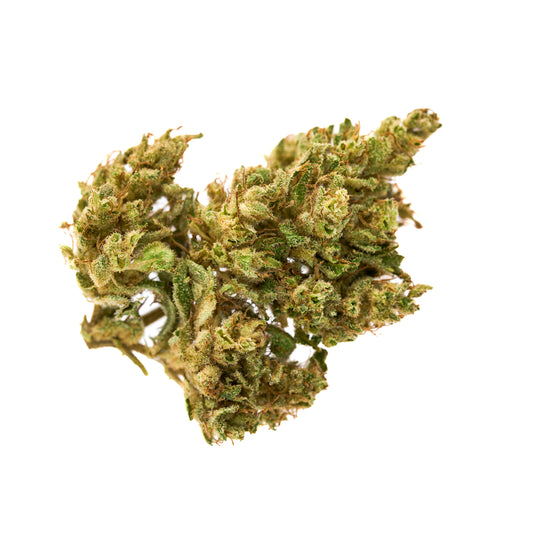
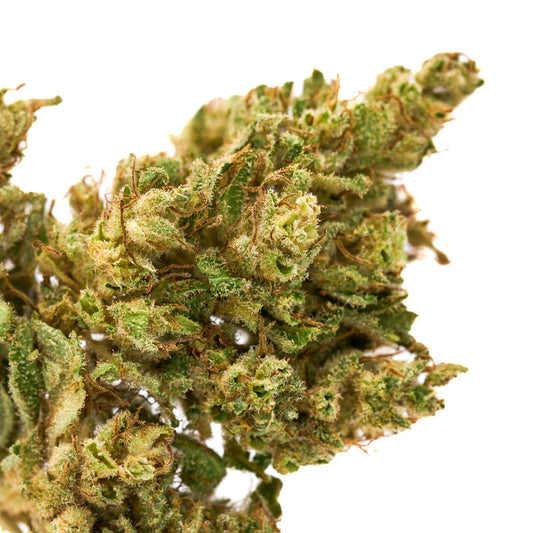
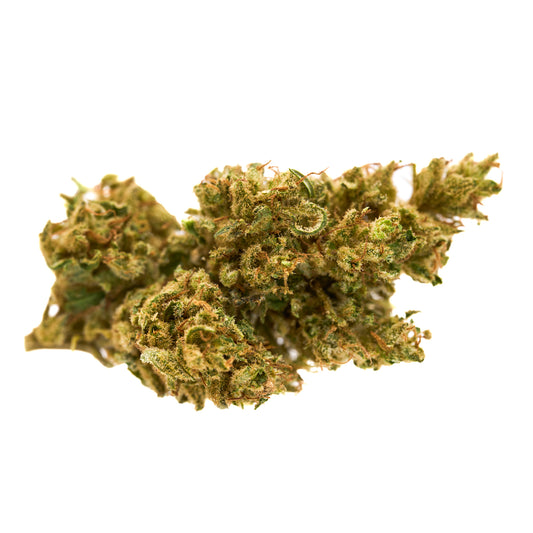
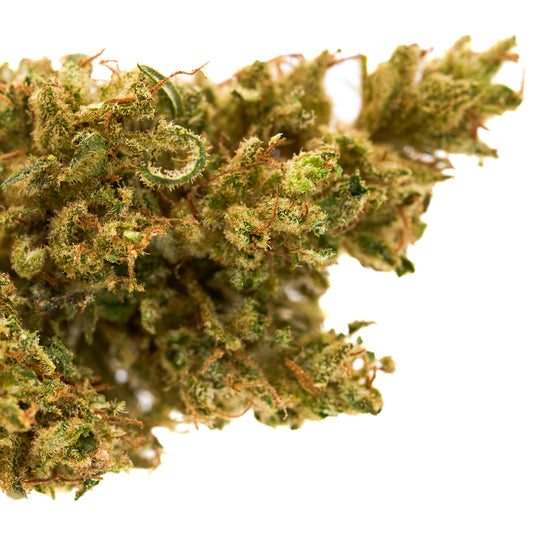
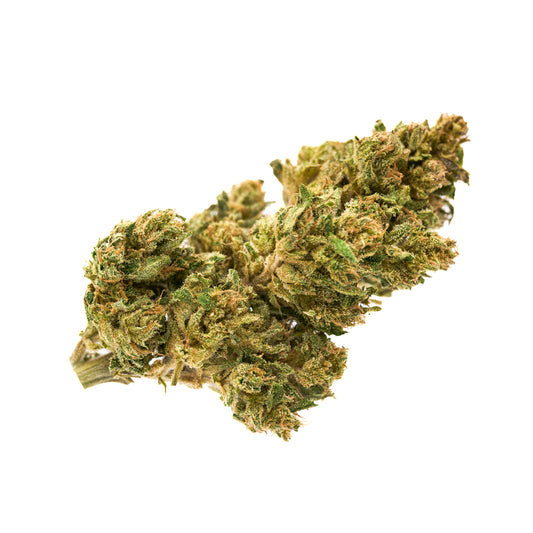
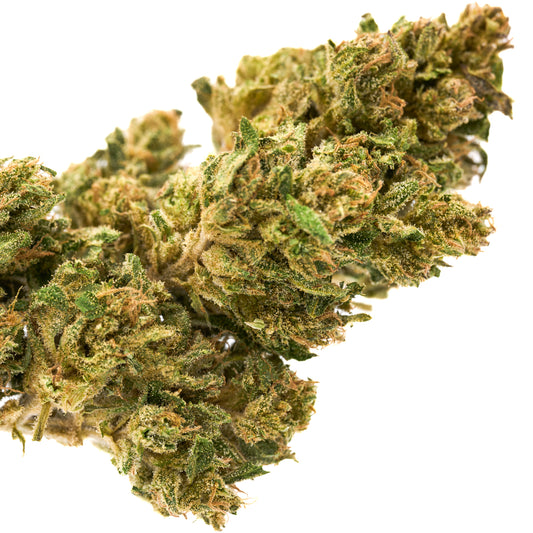



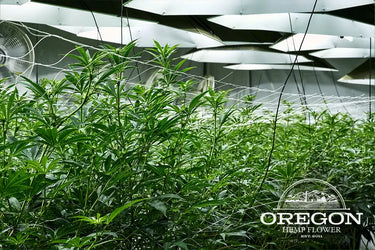

Leave a comment
Please note, comments need to be approved before they are published.